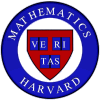
Tutorial Topics, Fall and Spring (2002-2003)
| This is an archived page. The currently offered tutorials are here |

| This is an archived page. The currently offered tutorials are here |
|
Fall Tutorials:
1. Curves and Surfaces (fall) taught by Izzet Coskun.
Prerequisite: one semester of one of the following: topology (Math 131), algebra (Math 122) or complex analysis (Math 113).
Description:
The theory of curves is a pinnacle resting over complex analysis,
topology, hyperbolic and algebraic geometry and number theory. In
this tutorial, we will examine how all these different points of view
interact to give an elegant theory of curves. Initially we will study
individual curves: their symmetries and the way they sit in projective
space. Then we will study how curves vary in families. We will give as
explicit a description as possible of moduli spaces in some simple cases.
Finally, as an application of the theory of curves we will study complex
surfaces and discuss their classification. This tutorial should provide
an invaluable example kit and a good intuition for future study in almost
any branch of mathematics. I hope to make it a real blast!
2. Complex Dynamics (fall) taught by Matt Bainbridge.
Prerequisite: complex analysis (Math 113).
Description:
In this tutorial, we will study the iteration of a rational map of the
Riemann sphere. Given such a rational map, one of the main problems is
to determine the long term behavior of points of the Riemann sphere under
the action of the map. A simplified version of the main result that we
will prove says that for a "generic" point on the Riemann sphere, the
set of accumulation points of its orbit is either a finite set of points,
or a finite set of disjoint simple closed curves. The techniques we will
develop to prove this result have powerful applications in the study of
hyperbolic manifolds and moduli of curves. Much of the tutorial will
follow Milnor's book, Dynamics in One Complex Variable. In order to get
the most out of the tutorial, as prerequisites we will assume that you
already have a basic knowledge of complex analysis and point set topology.
Spring Tutorials:
3. K-Theory and its Applications (spring) taught by Nick Ramsey and
Greg Grigorov.
Prerequisites: algebra at the level of Math 122), and topology at the level of Math 131 or manifolds at the level of Math 134 or 135.
Description:
Originally motivated by topology, K-theory has arisen in a very natural
way in many areas of mathematics. These include number theory, topology,
geometry, and complex analysis. This is largely because the ideas
embodied in K-theory are quite basic and fundamental. For example,
the first few algebraic K groups encode relationships between matrices.
In this tutorial we will focus mostly on algebraic K-theory, though we
will spend some time discussing topological K-theory for motivation.
We will give several instances in which K groups arise in number theory.
There are also a number of other extremely interesting applications that
we will have students in the tutorial study as part of their tutorial
projects.
4. Quantum Mechanics for the Masses and the Massless (spring) taught
by Spiro Karigiannis.
Prerequisites: multivariable calculus, linear algebra and comfort with reading and writing rigorous mathematics.
Description:
In this course we will study mathematical aspects of quantum mechanics. This is the physical theory of microscopic particles and their interactions. Mathematically, it can be formulated in different but equivalent ways, which are historically called 'matrix mechanics' and 'wave mechanics.' Both involve the theory of Hermitian linear operators on Hilbert spaces, which is the crossroads of infinite dimensional linear algebra and functional analysis. This course will be mathematically oriented, and we will try to prove as many of the important results as possible. Note that no physics background is required for this tutorial. Some of the topics we will cover include:
These mathematical ideas will be brought up naturally in the course of studying physical aspects of quantum mechanics, including such topics as:
And if time remains, we might also be able to cover some of:
2002-07-27 |